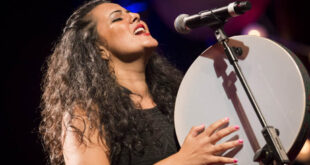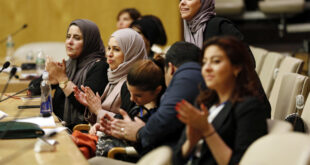Movenpick Hotel
22 - 24 June 2004
Cairo, Egypt
Though thousands of words are spoken and written each year about Arab satellites, scholars have rarely ventured into the means of analyzing their conceptual structures to ask the stakeholders about their views on the pressing socio-economic and political issues. Moreover, while a variety of organizations and governmental bodies have attempted to assist in the quest to modernize and develop, very little is known about internal perceptions of satellite channels and their consequences.
As a first step at attempting to better understand the current socio-economic issues of the Arab satellites in such a changing world, the International Academy for Media Science (IAMS), under the supervision of Egypt's Ministry of Information, organized its first annual academic conference at the Media Free City in Cairo, Egypt from June 22 to 24, 2004. More than sixty scholars and media experts from different countries in the Middle East and in Egypt held a series of meetings in an attempt to understand such issues from within. They presented papers to discuss the current challenges facing Arab satellites as well as related issue areas such as education, administration, policy formulation, regional development, and international affairs.
The information gathered will provide material for future research and analysis in collaboration with different regional and international scholars as well as a volume summarizing the authors' conclusions. Egyptian Ministry of Information programme funds were the major source of funding for the event. However, the conference owes its realization to its president, Dr. Mona El-Hadidi. The general patrol officer, Dr. Hassen Emad, served as secretary general of the conference, while Eng. Abd El-Rehman Hafez, chairman of Media City, moderated the parallel workshop.
Former minister of information Safwat Al-Sherif attended the conference opening reception, where he emphasized the importance of this event due to interesting collection of contributions from a number of international authors and practitioners. The focal point was on instructional approaches aiming to improve Arab media in the face of current challenges by further enhancement of implementing new trends of media teaching, vocational training, and learning experience through the use of technology-based environments.
First up, Hussein Amin, chairperson of the Journalism and Mass Communication Department at the American University in Cairo, presented a quantitative research paper entitlted "The Accomplishments and Challenges Facing the Arab Satellites in Terms of Impact and Penetation." Another research paper was co-authored and presented by Dr. Adel Jendli and Dr. Maher Kheleifa from Zayed University in Dubai, the United Arab Emirates. The paper analyzed "The Effects of Western Style Arabic Music on the Emirati Youth Identity and Culture" in an attempt to observe its role on the motivational instructional strategies influencing motivation in self-regulated learning. The outcomes demonstrate that much more work is required in this area in the future.
Dr. Salwa Emam Aly, professor of broadcasting at the Faculty of Mass Communication at Cairo University presented a research paper on "The Effects of the Egyptian Audience's Viewing of the Satellite Channels on the National Mass Media." Dr. Howayda Mostafa, assistant professor at the International Academy for Media Science, presented a paper tackling "Media Coverage of the War on Iraq on the Arab Satellite Channels: An Analytical and Critical Study."
Building on the concepts of "reusability" and "repurposability," Ibrahim Saleh from the American University in Cairo presented a paper dealing with "The Descriptive Analysis of Media Management in Egypt," which attempts to operationalize concepts such as "granularity," "reusability," "scalability," and "interoperability." Dr. Hussein Abou Shanab from Al-Aqsa University in Palestine presented a paper that attempts to observe "The Media Habits of the Reporters of Arab Satellite Channels, New Agencies and Press" as part of the process of moving from theory to practice in the instructional design in a global environment.
Another important research paper was presented by Ashraf Abou El-Yazeed, an art critic with Al-Arabi Magazine in Kuwait that discussed the artistic value of the logos of the Arab satellite channels. The paper reports on the "powerful learning" with a particular reference to the importance of interactivity in learning and the development of what could be termed "powerful adequate dialogue learning."
In the "Current Practice" section, there were a number of reports on "works in progress" from different parts of the region. Dr. Muhammad Moad, the head of Ain Shams Uninversity's Mass Communication and Child Cultures Department, presented an important report on ways of improving the TV news of the Egyptian Satellite Channel. Dr. Ahmed Farouk Radwan provided another important report from Helwan University that studied the nature of audience dependency on news bars as a source of information.
Dr. Fathi Amer from the Faculty of Computers and Information of Cairo University provided the conference with a crucial report introducing a proposed new design for the next generation for all unified communications and signaling protocols.
In the Commentary section, both scholars and practitioners provided different views on the adoption of technology-based approaches to media education that would eventually be reflected on the structure of Arab satellite channels. And in the Melting Pot section, the conference attendees provided their views on their recent experiences, which covered the full spectrum of available educational technologies, training issues, and research and development, as well as genre-specific topics.
The recommendations of the IAMS 2004 conference stem from a press statement from the Ministry of Information that emphasized the cause and the effects of the conference, which is to bring together "key local stakeholders to critically review all the current challenges facing Arab satellite channels".
It is a profound step to crystallize a sound program of comprehensive reform leading to the emergence of a structural conception of the constituencies and institutional framework for the media. Accordingly, this process of media reform is necessitated by two primary considerations: The laws, which affect the media, are scattered across statute books, which often make them inaccessible. And due to the fact that some of the enactments either duplicate or contradict each other, there are huge gaps which also need to be addressed. The conference recommendations stressed the need to consider the possibility of codifying or at least harmonizing the laws and policies.
The recommendations of the conference, according to the framers, are manifold-to re-assess the current legal and institutional framework for the control and regulation of the Arab satellite channels and agree on areas in need of reform in accordance with international standards on freedom of expression. The aim ewas to realize the international standards through a process of building and broadening of the constituency for media reform in the Middle East by sensitizing relevant sectors of Arab civil society.
The conference has also suggested embarking on a macro-plan to raise the profile of the issue of media reform during this time period so as to agree on a program of action for media reform. Such convergence of media and wider participation in communication underlie the global information revolution now permeating the Middle East and bypassing efforts of nearly all governments of the region. Hence the recommendation included accommodation to this information revolution, from the stimulation of public discourse to the promotion of acceptable views.
The main motto of the conference was to initiate a multiplication of actors in a widening public realm and generate profound structural changes in the content and format presented. This could only be attained through bringing forward the developmental paradigm that is presumed to be embodied in the region's first cohort of young people raised on television, increasing numbers of whom are also adept in the Internet. One observation by way pf concluding comment is the fact that the retail technology has brought into the public arena conventions and practices of face-to-face communication that mass communications had relegated to a "private" realm, expanding their reach and what is in the public sphere. The public sphere has been enriched not just by the addition of more players but by more conversations.
Arab satellite channels should overcome the dominating trends of political reporting and ideological commentary and abolish the indigenous forms that stir up tensions between local diversities and would-be uniformities. The Arab channels should be restructured into a model for post-mass media marked by audience fragmentation, diversity, and profit-seeking.
 Arab Media & Society The Arab Media Hub
Arab Media & Society The Arab Media Hub




